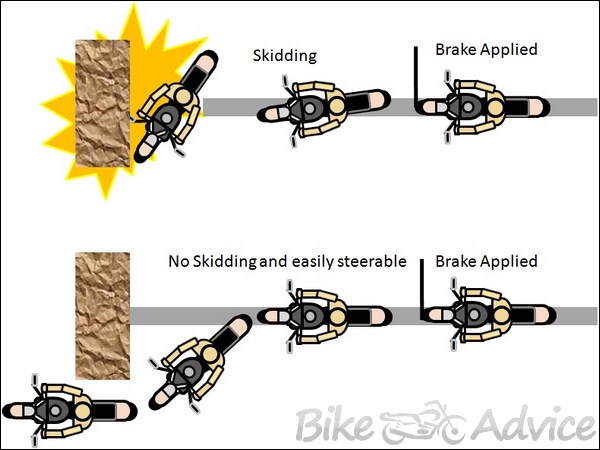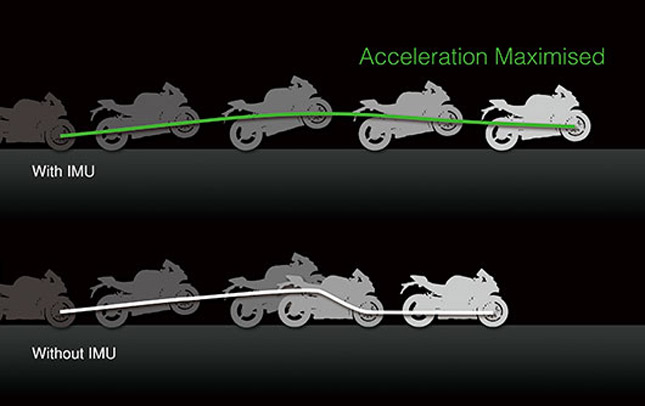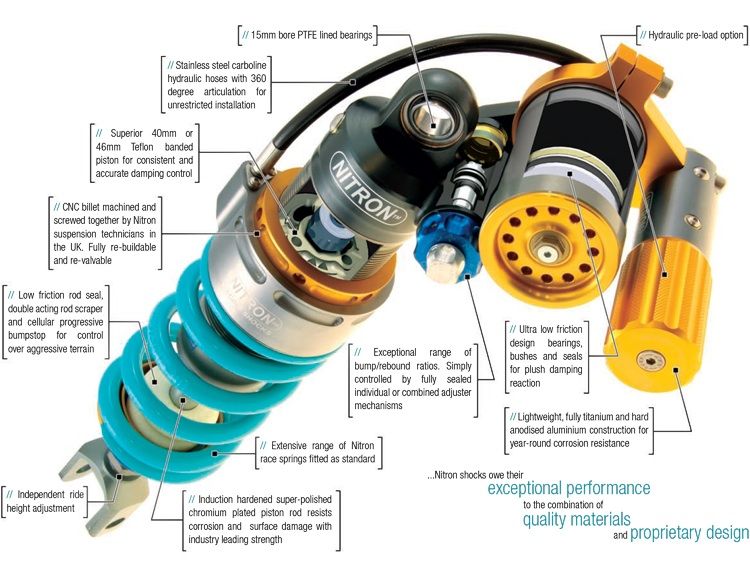In the last few years, we have seen that motorcycles have become very high tech and are sophisticated pieces of machinery. The system in these motorcycles has become complex. Some electronics include lean-sensitive ABS, self-adjusting electronic suspension, and data-logging capabilities that aren’t far off from what professional race teams use. A decade ago, the “brains” of some of these bikes were more powerful than desktop computers!
Now the question arises how these technological explosions have taken place in the last several years, and what do all these developments do? To see this incredible technology read on.
The motorcycle electronics revolution is coming
It was solely a number of years past that a decent portion of the motorbike riding community was truly fighting against the thought of electronic systems that will in any method interfere with direct management of a bike. Motorbike riders aren’t like automobile drivers; they prefer to be totally engaged and in complete control of their bikes, and that they get pleasure from the simplicity of a machine that doesn’t “think,” and instead simply “does.” The introduction of systems as easy as ABS and Traction management just a few years ago had several riders grumbling in opposition; on-line forums and social media were droning with comments akin to “this can take all the ability out of riding,” or “if these systems fail throughout a ride, you’re screwed!” it absolutely was not Associate in Nursing uncommon opinion to suppose that those electronic “safety nets” would, in some way, ruin riding itself; even MotoGP champ Simon Crafar came move into the Suzuki video below criticizing them, speech communication “riding shouldn’t be regarding natural philosophy” and to “take back control” of your bike. However, quick forward simply a number of years, and it’s become clear that electronics have very hit their stride. they need to become an integral part of professional motorbike sport in particular; Cristian Gabarrini, supervisor of the Honda RC213V production race bike project, said “from 2007 till now, natural philosophy has evolved significantly, in all probability quite something else.” Or, placed rather eloquently by Giacomo Giudotti, crew chief of Pramac Ducati, “electronics don't seem to be a separate part from the engine; however rather, they're born with it.” The technology from the raceway has created its thanks to the road in an exceedingly hurry; top-of-the-line performance bikes just like the BMW R1200GS or the Ducati Panigale are equipped with dizzying arrays of electronic systems and sensors, but even a lot of mid-range models currently associate with ABS Associate in Nursing Traction management as choices. Love it or not, the previous couple of years have seen an explosion in electronic options for motorcycles, and it's become clear that this can be wherever the long run is headed for the industry.
What are the types of Electronic Systems used in Motorcycles now?
It started with basics like ABS and traction control, however currently you'll get bikes equipped with an elaborate array of electronics thus sophisticated, they even borrow nomenclature from the astronautics world a number of the systems obtainable on bikes these days are:
- Anti-lock Brake System
- Selectable Riding Modes
- Inertial Measurement Unit
- Traction Control
- Slide Control
- Wheelie Control
- Electronic Suspension Damping
- Quick shifter
- Launch Control
Anti-lock Brake System or ABS:
The first electronic system that came into action is the anti-lock brake system and it also stirred up some controversy about riding communities but now it is accepted by everyone owning a car or bike. On 1 April 2018 the government of India made it compulsory that every motorcycle above 125cc should be fitted with an ABS. This braking system has now become a popular electronic system.
How it works:
A locked wheel equals a sliding tire, and which means a lack of manipulation. But you could keep managing it so long as you've got traction, so ABS “pulses” the brakes at a completely fast fee to gradual the bike down whilst by no means letting the tire damage right into a slide. The ultra-modern structures may even gradual a motorcycle mid-corner without inflicting the bike to straighten out below braking!

Source: bikeadvice.in
Selectable Riding Modes:
When your bike contains a computerized “brain,” you'll be able to program it to possess multiple “personalities” too. One in all the best electronic systems on new bikes is the ability to pick out multiple riding modes, that vary bike settings, supported terrain, weather, or heck, even simply your mood!
How it works:
The ECU of bikes comes pre-programmed with different riding modes to adjust with different road and riding conditions. Riding modes can be changed to adjust power delivery, terrain conditions or on weather conditions or even on your mood.

Source: cdn1.bikebandit-images.com
Inertial Measurement Unit:
For all these advanced systems to figure optimally, they have to accumulate data, and a great deal of it. To try and do that, some bikes are currently equipped with inertial measuring Units (or IMUs) to record the bike’s movement through space.
How it works:
IMU uses data from gyros and accelerometers to measure movements in all directions, including roll, yaw, and acceleration. The data is sent to the ECU, which uses the info to control other systems like wheelie control and slide control.

Source: www.bikesmedia.in
Traction Control:
Early systems were aforesaid to be intrusive (and even unnerving), however nowadays, you'll hardly tell once this method engages. Traction management reduces power to the rear wheel whenever wheel slip is detected, to forestall slides that might possibly lead to a spill otherwise.
How it works:
Traction control comes into play when the speed sensor detects a difference in the speed of the front and rear wheel and that would lead to a sliding rear wheel. The speed sensor sends the signal to the ECU and the ECU retards the ignition to reduce power as necessary to regain traction.

Source: i.ytimg.com
Slide Control:
In bike racing, slippery the rear isn’t essentially such a nasty thing. This system, creating its debut on the just-released 2015 R1, comes straight from Yamaha’s YZR-M1 race bike, and works to manage slides instead of stopping them altogether.
How it works:
Uses a similar sensor within the traction control system, however adds in information from the foreign terrorist organization to observe sideways motion, and intervenes consequently to manage the slide while not permitting the slide get too squirrely.

Source: cdn1.bikebandit-images.com
Wheelie Control:
The very last thing you would like to try and do is loop a brand new high-end sport bike making an attempt to pop a wheelie. but then again…why obtain a brand new high-end sport bike if you’re not gonna do wheelies? to offer you a bit of security whereas aiming for the sky, wheelie management is your friend.
How it works:
IMU sensors notice once the front wheel lifts off the ground, and engine power is reduced consequently to limit wheelie angle, or stop wheelies altogether. Adjustable to multiple levels, or is turned off fully (if you dare.)

Source: www.wikihow.com
Electronic Suspension Damping:
Borrowing technology from top-of-the-line luxury cars, this method mechanically changes the suspension to optimize suspension damping for road conditions. The newest systems go a step further; they adjust damping, supported braking, acceleration, and lean angle, thus suspension damping will be adjusted unendingly while going through a corner!
How it works:
Again gathering information from brakes, lean angle sensors, and rider inputs, the system can calculate the best level of damping, and create changes to damping valves within the forks or shock in a time period to instantly accommodate rider demands. Some bikes, just like the BMW R1200GS, even have a separate European only to perform this task!

Source: i72.photobucket.com
Quickshifter:
Seamless, quick upshifting is often nice, however during a competitive racing scenario, those split seconds spent shifting will truly build the distinction between winning and losing. simply click up on the shifter peg, and the quickshifter can stick you in gear faster than lubricated lightning.
How it works:
When engaged, the eu cuts ignition for a fraction of a second, permitting associate upshift while not using the clutch or letting off the throttle. Some systems, like that on the new Ducati Panigale 1299, permit clutch less downshifting too!. Quickshifters cut the spark however not fuel, that is why you typically hear an audible pop from the ensuing backfire in between shifts

Source: cdn.dealerspike.com
Launch Control:
The modern day equivalent of being shot out of a cannon, launch control permits you to drop the clutch at full throttle while not processing the bike. If you'll suspend on, you can expertise your bike rocketing you forward at easy lay power – excellent for error-free race starts..
How it works:
Again using info relayed from the IMU, the Launch system retards power throughout a launch barely enough to stop the bike from doing a wheelie (where energy is lost by increasing and not forward.) The system can mechanically fine-tune between throttle and lift for max acceleration.
The Electronics Revolution Continues
With all the technological advancements in electronics returning in fast succession from all the main manufacturers, it’s become clear – the motorbike industry really is undergoing an associated electronics revolution, and therefore the systems we have a tendency to see on future bikes can solely become smarter, a lot more sophisticated, and more affordable. The fears of those who say bikes are “damn close to riding themselves” could be secure – however, that doesn’t essentially mean riding them are going to be any less fun!